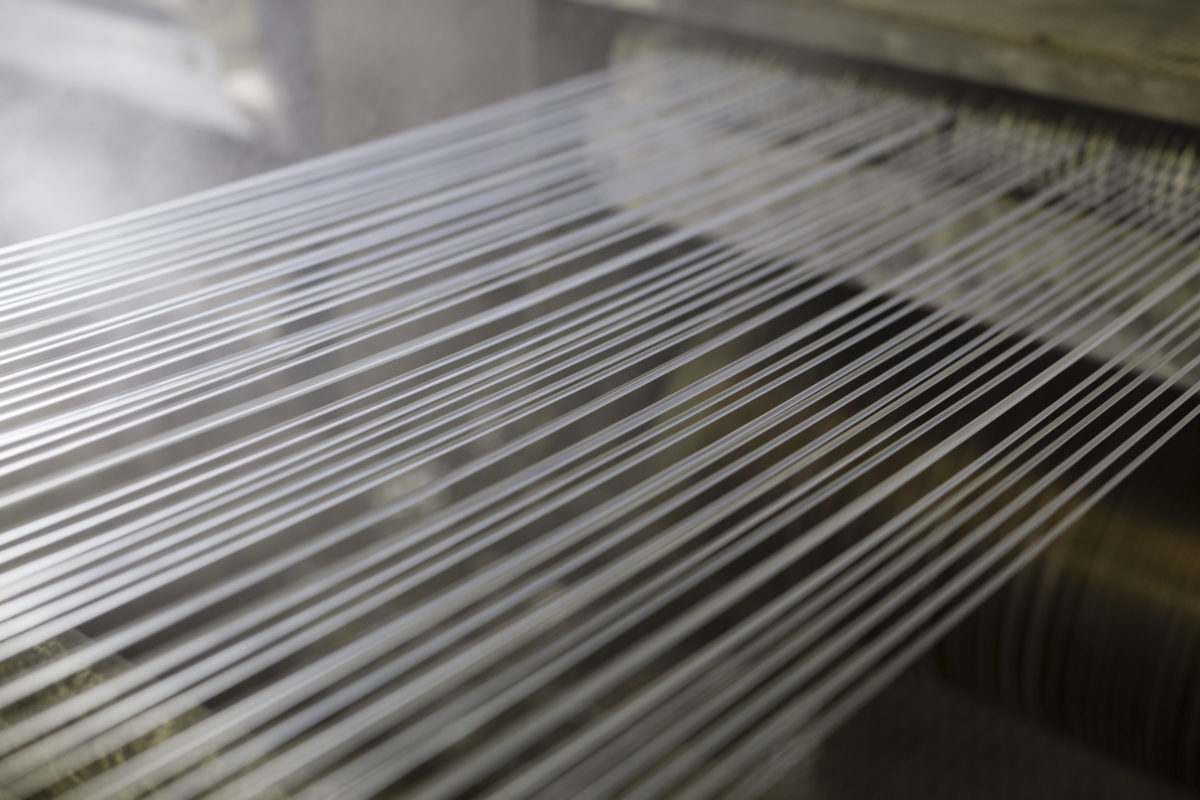If you have been speaking about sustainability this year, it’s more than likely that the topic of ‘regeneration’ has cropped up in conversation.
Far from just another buzzword, it means taking an approach that restores something to its original state, rather than simply trying not to damage it. From regenerative agriculture, which sets out to put back lost nutrients into our soil, to regenerative travel, aiming to boost the wellbeing of the host country, the concept is spreading fast through a whole host of industries.
Yet for Giulio Bonazzi, Chairman and CEO of Aquafil Group, regeneration is not a new approach. ECONYL® regenerated nylon is made from waste, and has become a household name in the sustainability scene over recent years, used to create everything from apparel to interiors.
But what does it actually mean to regenerate a fibre, and why does this make ECONYL® a smarter choice than other textiles, both standard fibres and those made from recycled plastics?
What Is Regenerated Nylon?
As its name suggests, regenerated nylon is made from a process that brings the material back to its original state. While recycling can often mean downcycling, in which some of the quality or functionality of the original textile is lost, regeneration provides a fibre that is as versatile as new nylon.
In this way, ECONYL® ensures that designers can work sustainably without compromising on creativity. “The product is absolutely identical to the petroleum-based version, but made entirely from waste, without taking any raw material from the planet”, explains Bonazzi, shining a little light on exactly how the fibre has come to be used for everything from Mara Hoffman’s signature swimwear to a reinvention of the iconic Burberry car coat in shiny black.
Diverting Waste From Our Ecosystems
So how do you go about regenerating a fibre?
Well, it’s all about creating a potential closed-loop system. The first step is to find the raw materials. Instead of turning to petroleum, as is used to make standard nylon, ECONYL®’s key components include unwanted carpets, otherwise destined for landfill, fishing nets from aquaculture, and ghost nets. Currently discarded fishing nets are contributing to the nylon waste in our oceans that makes up 40% of all plastic pollution. Fabric scraps and other industrial plastic waste complete the composition.
Regenerating existing materials actively helps to restore our ecosystems by diverting plastic otherwise polluting the Earth. “We focus on materials that the plastic industry is not already recycling”, Bonazzi continues. “It starts out with us travelling around the world, finding fishing nets that have been used and discarded and organising the reverse logistics to take them back. We also go to the US to organise the collection of carpet waste, ensuring it does not go into landfill.”
Yet extracting waste that is well embedded into our ecosystems is no easy feat, especially when in the past, everything was designed to last longer with little regard to where it might end up at the end of its useful life.
Reducing The Production Of “New Nylon”
The waste materials are then sorted and cleaned to extract all of the nylon possible, before undergoing a radical regeneration process that takes it back to its original state. One of the key environmental advantages of this process is that it is a far more ecological alternative to the production of “new nylon”, which is made with carbon-based chemicals such as coal and crude oil. And as with most process involving petroleum, this results in the release of unwanted greenhouse gases.
For every 10,000 tons of ECONYL® produced instead of standard nylon, 70,000 barrels of crude oil are saved. Meanwhile, by cutting out the manipulation of carbon-based compounds, the whole process prevents 65,100 tonnes of CO2 equivalent emissions from entering our atmosphere too.
CO2 emissions are emissions stemming from the burning of fossil fuels and the manufacture of cement; they include carbon dioxide produced during consumption of solid, liquid, and gas fuels as well as gas flaring. We all produce carbon dioxide (CO2), directly or indirectly. For example, we directly produce carbon dioxide when we drive a car or take a flight.
Finite Resources, Infinitely Creativity
Yet perhaps the most exciting aspect of ECONYL® is its potential to be infinitely regenerated, giving designers the potential to keep creating without running down the Earth’s resources. “We have created a finished material that can then be recycled over and over again, thanks to its unusual ability to return back to the original monomer; the building block that has created the fibre,” Bonazzi proudly explains.
In a fashion system that is still learning to slow down, regenerated nylon makes circularity accessible to everyone. It provides a means to channel the creativity and self-expression that clothing provides, without relying on raw materials each time. Since its earliest adopters such as Stella McCartney, who used ECONYL® to lower the impact of its iconic Falabella bag, brands have made it possible for consumers at all levels to buy into a more sustainable system. The fibre has powered an industry-wide revolution in the use of synthetic fibres; from the wealth of labels such as Reformation and Manuka Swim who offer sustainable swimwear with first-class functionality, right through to Gucci, who recently used the fibre for its ‘Gucci Off The Grid’ low impact capsule collection.
The alternatives are out there, and as fashion moves away from the faster-than-fast business model that has defined the last decade, consumers also have a responsibility to choose clothing that puts the planet first. Ultimately, opting for regenerated nylon means buying into a smarter system, acting now for the future of our planet.
Author: Beatrice Murray-Nag
